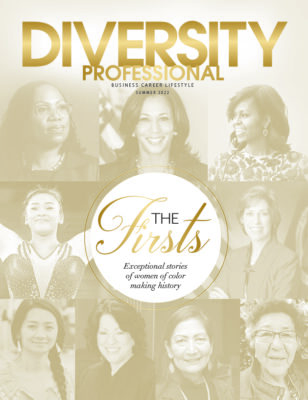Hidden Figures… Limited Figures
The untold story of Katherine G. Johnson, Dorothy Vaughan and Mary Jackson, Brilliant African-American women working at the National Aeronautics Space Administration (NASA), was a great reminder to diverse professionals to keep making remarkable strides in their professions.
These three women served as the brains behind one of the greatest operations in history: the launch of astronaut John Glenn into orbit. There were many things these women experienced, learned and shared that can be great leadership traits to use today. Diverse professionals can and are driving success in many industries. However, there could be much more success if there were fewer limited figures.
Stay cutting edge.
Vaughan lead a team that made significant contributions to the organization. Let’s not forget her current situation was not ideal. She and other women in her office were dispensable. She was overlooked, performing the duties of a job without having the title. But she stayed positive, and continued to perform with excellence while making her desires known. She took it upon herself to research the computer language of the future.
In the movie, Vaughan had the wisdom to observe and notice the direction the organization was going in. She did not stand around the water cooler discussing what was going wrong but took her career into her own hands. She learned the details of the language and taught her team enough about it to make them more of an asset to NASA.
What direction is your organization going in? What do they need? How can you lead the organization in accomplishing the mission?
Look Beyond Yourself.
Vaughan trained her team to be valuable assets. When it was time to be the answer to the organization’s problem , she did not only secure herself a job. She positioned the entire team to be the solution; job security and value add. In the end, she received the position she desired and earned while serving others.

Good leaders need followers. It is not a bad idea to develop your own followers. The mission moved beyond an individual (limited) to creating a pipeline of leaders and high-potential team members. Are you building for many or just a few—you? It is imperative that you build an immediate pipeline of diverse high potentials.
Your mastermind group.
All three of the ladies had different responsibilities in different departments. They shared in each other’s journey. They became confidants and a support system for each other. When they met outside of work, they encouraged each other to push beyond the limitations thrust upon them. And as parents, they shared in the struggle at all levels. There was no tearing one down so the other could get ahead. They became the eyes and ears for each other—sharing knowledge, skills and a common goal.
Who’s a part of your professional mastermind? Are you trustworthy enough for others to share with you? Who are you supporting despite the challenges?
Hidden figures provided great examples of leadership, determination, career support, not sabotage, and the genuine desire to see others succeed. We can be hidden for a season, but never get comfortable being limited.

BOOK
“Hidden Figures: The American Dream and the Untold Story of the Black Women Mathematicians Who Helped Win the Space Race”
The #1 New York Times bestseller and critically acclaimed box-office hit was nominated for three Academy Awards, namely Best Adapted Screenplay (Allison Schroeder and Ted Melfi), Best Supporting Actress (Octavia Spencer) and Best Picture. Grossing more than $180 million, Hidden Figures has become the biggest-grossing movie fronted by an African American female ever.
The phenomenal true story of the black female mathematicians at NASA whose calculations helped fuel some of America’s greatest achievements in space.
Before John Glenn orbited the earth, or Neil Armstrong walked on the moon, a group of dedicated female mathematicians known as “human computers” used pencils, slide rules and adding machines to calculate the numbers that would launch rockets, and astronauts, into space.
Among these problem-solvers were a group of exceptionally talented African American women, some of the brightest minds of their generation. Originally relegated to teaching math in the South’s segregated public schools, they were called into service during the labor shortages of World War II, when America’s aeronautics industry was in dire need of anyone who had the right stuff. Suddenly these overlooked math whizzes had a shot at jobs worthy of their skills, and they answered Uncle Sam’s call, moving to Hampton, Virginia and the fascinating, high-energy world of the Langley Memorial Aeronautical Laboratory.









